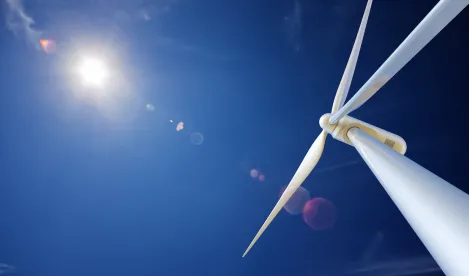FERC Rolls Back ISO New England Tariff Incentivizing New Generation and Storage Projects
On 2 December 2020, the Federal Energy Regulatory Commission (FERC or the Commission) ordered the abandonment of a tariff regime designed to provide price stability for new build generation resources in New England’s power markets, including renewables and storage. ISO New England (ISO-NE) established “New Entrant Rules” at the inception of ISO-NE’s forward capacity market, which locked in capacity payments for new generation resources for up to seven years. By providing a predictable revenue stream, the New Entrant Rules helped to incentivize new power producers to join the capacity market and to make new generation projects more attractive to finance.
FERC determined that the New Entrant Rules have become unjust and unreasonable because they result in price distortion in ISO-NE’s capacity market that is no longer justified. The Commission explained that the New England capacity market has matured since the New Entrant Rules were put in place, and that this fact combined with a number of other reforms mean that the market no longer requires such drastic measures to attract new entry. For instance, since 2014, ISO NE introduced (1) a system-wide downward sloping demand curve to curb capacity price volatility; and (2) energy market scarcity pricing enhancements to increase the price resources paid for energy and reserves, in real-time, when supply was low. FERC determined that these changes to the capacity, energy, and ancillary services markets have significantly altered the landscape for new entrants in ISO-NE to such an extent that the New Entrant Rules are no longer necessary.
Coalition of Labor and Climate Groups Voice Support for the “American Nuclear Infrastructure Act”
On 11 December 2020, a coalition of labor groups and climate-change focused organizations voiced their support for the “American Nuclear Infrastructure Act of 2020” (S. 4897) (the ANIA). Introduced in the U.S. Senate in November by a bipartisan coalition including Senators John Barrasso (R-WY), Sheldon Whitehouse (D-RI), Mike Crapo (R-ID), and Cory Booker (D-NJ), the bill aims to revitalize U.S. nuclear infrastructure while supporting carbon-reduction goals. The bill would establish a new program, administered by the Environmental Protection Agency, to provide incentives to support aging nuclear power plants. It would also authorize a national uranium reserve to secure U.S. uranium supplies and support the U.S. mining sector. Additionally, the bill would create a new fund for the cleanup of abandoned mines on tribal lands.
The broad coalition offering its support for the ANIA includes labor groups such as the United Steelworkers, the Utility Workers Union of America, and the International Brotherhood of Electrical Workers, as well as climate groups such as the Clean Air Task Force and the Center for Climate and Energy Solutions. These groups support the bill due to its potential to preserve jobs, reduce carbon emissions, and encourage domestic innovation of next-generation nuclear reactors.
The bill has been approved by the Senate Committee on Environment and Public Works and has been placed on the Senate Calendar. While the bill is unlikely to receive a floor vote this late in the legislative session, its broad bipartisan support suggests that the proposed legislation may be revisited in the next session.
Sidewalks out of Turbine Blades: Sustainaility of Renewables’ Afterlife
On 8 December 2020, GE Renewable Energy announced that it will begin recycling its U.S.-based onshore turbine blades into cement via a multi-year agreement with Veolia North America. The process will involve using a co-processing cement kiln technology. The shredded blades will be used as a replacement for coal, sand, and clay at cement manufacturing facilities across the United States. Veolia North America has already processed more than 100 blades so far this fall. This deal will help propel GE Renewable Energy toward its goal of achieving carbon neutrality by the end of 2020.
Similar commercial scale recycling processes have already taken hold in Europe, where the method has repurposed decommissioned blades successfully. The deal is the first of its kind in the U.S. wind industry, and is expected to provide a net reduction of 27 percent in carbon dioxide emissions and a 13 percent net reduction in water consumption.






 />i
/>i
